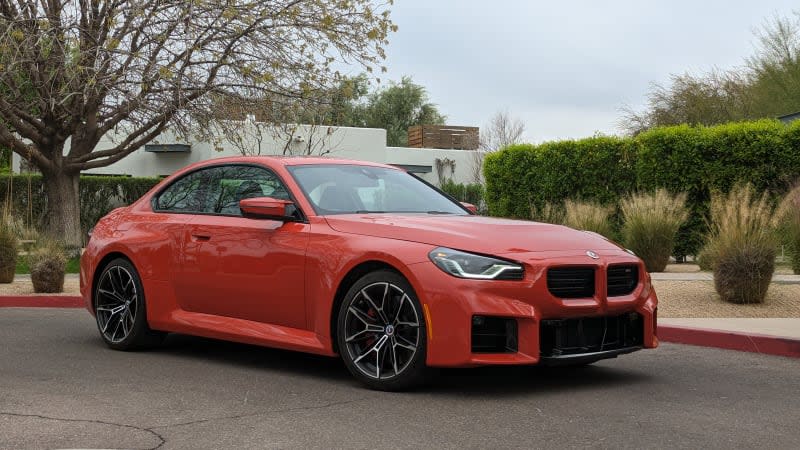2023 BMW M2 First Drive: Enjoy it while it lasts

SCOTTSDALE, Ariz. — The 2023 BMW M2 is the one we’ve all been waiting for. In just a single generation, the M2 line — including the M2, M2 Competition and M2 CS — stole our hearts and captured the small, performance BMW spirit lost by its other models that had grown in size and power. Now, it’s back for a second generation, and BMW didn’t stray too far from its original formula for success.
This new M2, as it did before in Competition and CS versions, borrows its powertrain — and so much more — from the M3/M4. This means forward motivation comes via the M division’s 3.0-liter twin-turbo inline-six. Output is slightly down versus the donor car, as the M2 produces 453 horsepower and 406 pound-feet of torque — that’s 20 horsepower less than the standard M4, but the same amount of torque. There’s no Competition version for now, but don’t be surprised if BMW introduces one down the road.
Shifting is done with either a six-speed manual transmission or an eight-speed automatic, both lifted from the M3/M4. Both are also no-cost options, but it’s the continued commitment to offering a manual transmission that we most deeply appreciate. Like other BMW manual transmissions, this one is rubbery but features short throws and a great shift knob. Compared to the M4’s shifter, there are the smallest of improvements to the feedback as you slot it into gears, making the M2’s manual a tiny bit more fun to use. We didn’t get the opportunity to test out the automatic at BMW’s first drive event, but if it mimics the transmission from the M3/M4, it’s going to be a smooth shifter when tooling around town and feature snappy-enough response when you swap it into more aggressive drive modes. The sharpness of the M2’s outgoing dual-clutch automatic will be missed, but the trade-off for refinement in everyday driving is one we can live with. Regardless of performance, we highly recommend the manual — these kinds of cars simply won’t be around forever.
Like its 2 Series donor car, the M2 is built upon the same modular platform as other rear-drive BMWs. It’s also longer, wider and lower than its predecessor. Its overall length is now just 4.3 inches less than that of the M4, and the M4 is a big, heavy car these days. Therefore, so is the M2. In fact, curb weight for the manual checks in at 3,814 pounds; the automatic at 3,867. That’s only about 15 pounds less. At least the M2 is rear-drive only, just how the M gods intended it to be.
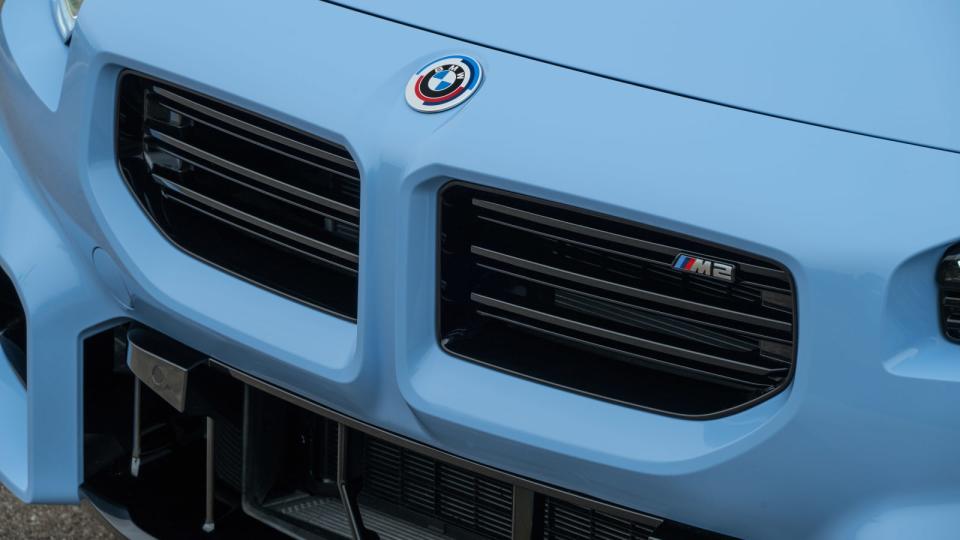
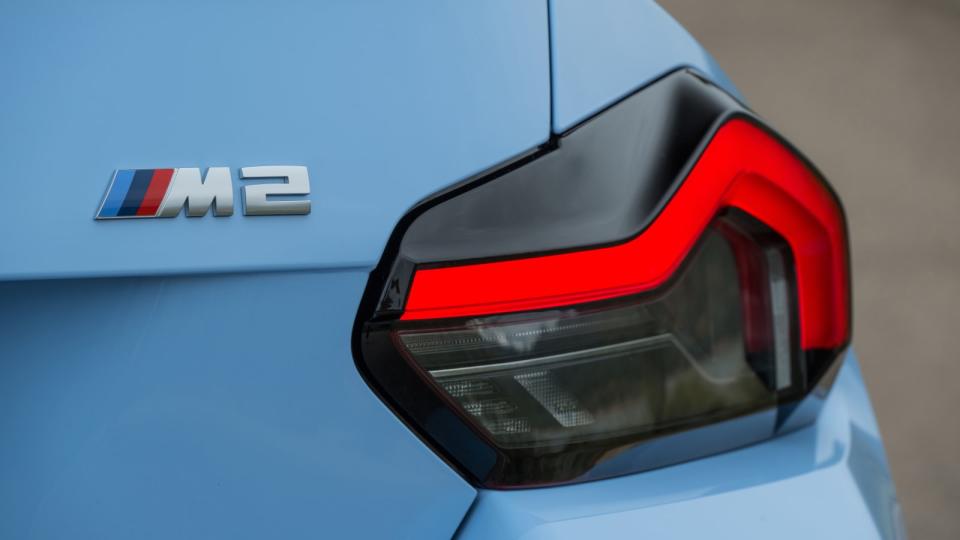
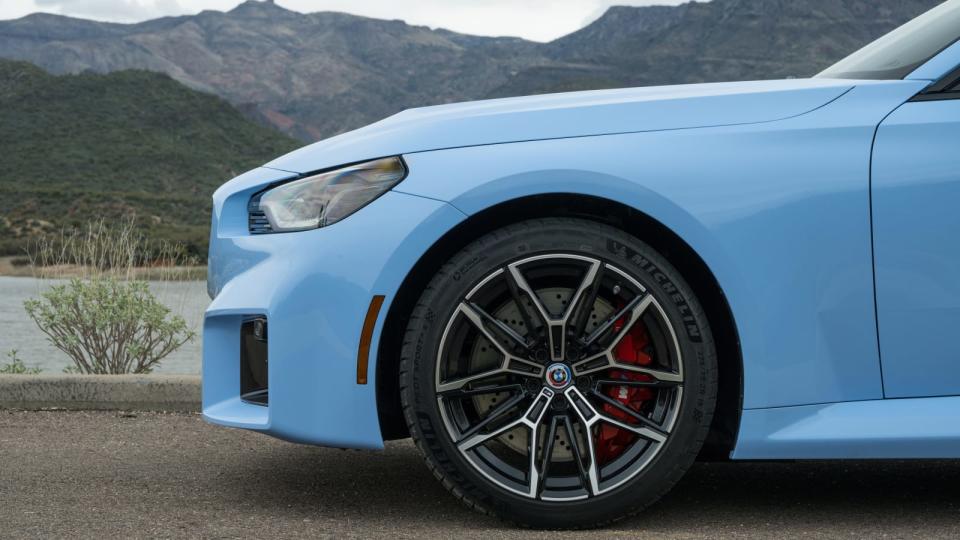
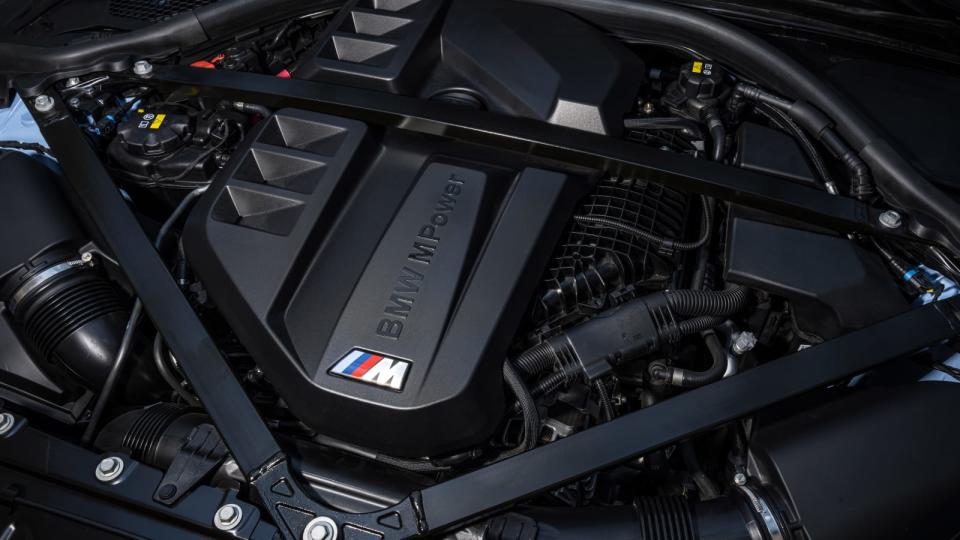
Its new sheetmetal is controversial, to say the least. BMW may not have applied its big grille aesthetic, but the boxiness and sharp angles everywhere you look are polarizing. The massive fenders are easily its most alluring quality in person, and if you’re questioning its style in photos, it’s worth going to see the M2 in the flesh for a second opinion. The more we walked around it, the more we ended up liking and appreciating its quirkiness. Besides the customary quad exhaust poking out the back, essentially nothing about this car looks like an M4. That’s a good thing, because design is one of the biggest differentiators between the two.
The M4’s chassis stiffening, bracing componentry and suspension design is transferred over to the M2 in typical M Frankenstein fashion. It doesn’t stop there, though, as the M2 shares BMW’s adjustable brake-by-wire braking system, 10-mode stability control intervention system, rev-match downshift program (easily turned off) and even the same staggered-size wheels and tires. With so many similarities to the M4, it comes as no surprise that the M2 shares a number of driving qualities — ride, engine feel, steering and brakes — with its slightly bigger sibling. That said, the M2’s smaller footprint still imbues it with a character of its own.
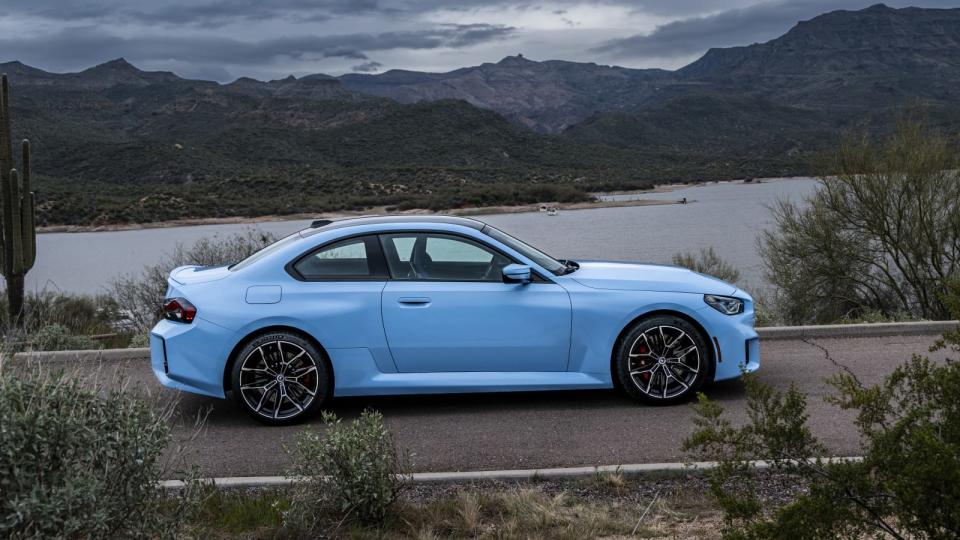
Accelerating from a stop instantly reveals that the M2 has more than enough power. The rear end surges forward with delight as it squirms around behind you through first. Shift quickly into second, and the fat torque of the inline-six will send the rear end into another sideways scramble before quickly finding enough traction for rapid acceleration. It’s all a bit theatric and silly for the sake of being silly versus the more stable M4. Sixty mph arrives in 4.1 seconds with the manual; 3.9 seconds with the automatic. The M4 manual does it in the same 4.1 seconds, while the auto-only Competition with more power drops it to 3.8. The engine and exhaust sounds are familiar, and while there’s no doubt this exhaust sings a lovely growl-snap tune all by itself, there could be less synthetic noise pumped into the cabin.
Don’t confuse the M2’s accelerative personality as validation that the M2 is the same rabble-rouser of a sports coupe that it was before, though. Just like the regular 2 Series, the new M2 smooths out some of the previous car’s ragged edges. The outgoing model could bite you if you weren’t aware of its tendencies. Such an outcome is inevitable when a short wheelbase and tons of power at the rear wheels are combined. Meanwhile, the new M2 tones the frazzled character of the old car back a few notches by being more predictable and less likely to step out on you. This is the case despite BMW’s efforts to carry over the previous M2’s character.
Initial turn-in reveals a sharper front end than the M4, as BMW installs stiffer springs in front and softer springs in back. The goal here was to give the M2 a more responsive and tighter front-end response than the M4, but to also keep the rear end lively in the same way the previous M2 was constantly moving and chattering away at you from behind. It works, to a degree, but the more difficult-to-drive and less-pinned-down old M2 was more lovable.

 Yahoo Autos
Yahoo Autos 
